What was school like the 1950s - UK
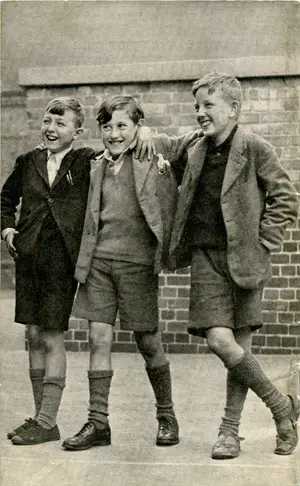
Image 1 - information
Education in the 1950s was shaped by the 1944 Education Act. The Act guaranteed a free secondary education for all up to the age of fifteen.
The Act did not lay down a required selection at age eleven. Most local authorities though made use of the schools they already had. There were selective state-funded grammar schools and modern schools or senior schools. The latter provided education up to the age of fourteen for children not able to go the grammars.
The result was a system that reflected the needs of industry as seen just after the Second World War, but probably not what was needed to make Britain competitive in the post-war world.
There was high demand for manual labour, for both skilled and unskilled trades. Scientific and technical jobs were on the increase, but there was a lower demand for graduates than today.
Around three quarters of school leavers left with no qualifications at all. In the 1950s it was an achievement to get five GCE O-level passes. This opened the door to many better-paid jobs. There was a constant demand from parents for more grammar school places. Grammar schools were the path to qualifications and higher earnings, although there was also pressure from parents for children to leave school as early as possible and start earning.
The 1944 Education Act raised the school leaving age. This, together with an increasing population, meant that there was a need to build new schools.
The new schools were much better than the old ones. They had large airy classrooms with large windows, modern-style buildings with large assembly halls and gymnasiums. School playing fields were also much larger than in pre-war days.
What was school like in the 1950s compared to today?
- You could leave school at age fifteen
- Selection was the norm for state and independent schools in the 1950s
- GCSEs were called GCEs and far fewer young people took them
- Some children stayed at the same school from age seven to age fifteen
- You were much more likely to have gone to a single sex school in the 1950s
- Corporal punishment was common in schools in the 1950s
- Children were put into streams according to ability from ages as young as seven
- All children at state schools got one third of a pint of milk a day free of charge
- Some subjects were gender specific. Girls did cookery, needlework and typing; boys did woodwork and metalwork
- Boys were usually called by the surnames by the teachers
At what age did you start school in the 1950s?
School started at age five in the 1950s. Children started school at the beginning of the term in which they had their fifth birthday. So they were usually aged four when they first entered the school gates.
What was the school leaving age?
The school leaving age in the 1950s was fifteen. It was raised from fourteen in 1947.
Children could leave school in the term following their fifteenth birthday. The last year of school was the fourth rather than the fifth year for most children.
Leavers at fifteen often left school with no qualifications.
Types of school
Schools were divided into the state and independent sector as today. State schools offered primary education up to age eleven and secondary education from eleven to eighteen.
- Infant school - ages five to seven
- Junior school - ages seven to eleven
- Secondary schools - ages eleven-plus
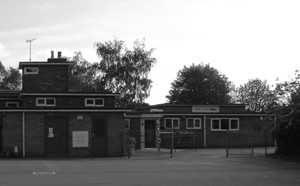
Infants and juniors
Primary school was divided into infants and juniors. When I started school, the 'juniors' seemed quite grown-up.
Infant school was for ages five to seven.
In the school year starting after their seventh birthday, children transferred to this junior school. This was not such a big step as in modern primary schools, built in the 1950s, it just meant going from class 3 to class 4 in the same school.
In some counties there was still an old Infant school for up to age seven. Children went to 'big school' in the year after their seventh birthday. This is how education worked before the Second World War. 'Big school' was the school that took them from age seven to age fourteen, the legal school leaving age in the UK at that time. [1]
Secondary schools
In the state sector secondary schools could be:
- Grammar schools
- Technical schools
- Secondary modern schools
- Multi-lateral schools
- Comprehensive schools
It depended on the local education authority whether they offered a selective system based on grammar and secondary modern schools or comprehensive or bi-lateral schools.
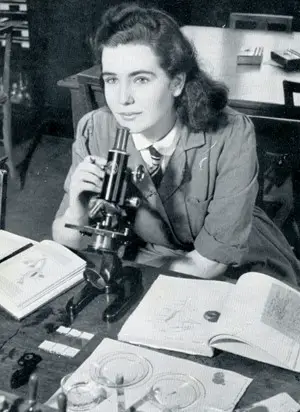
Image 2 - information
Grammar Schools
Grammar schools were originally set up in the medieval age to teach Latin or Greek grammar. Hence the name. There were a few grammar schools of very old foundation still in the state system in the 1950s. For example, Queen Elizabeth Grammar School, Middleton, Manchester could trace its history back to 1412. [2]
In the early twentieth century grammar schools were partially funded by the state. They took a combination of scholarship pupils and fee payers. The scholarship pupils passed an examination at age eleven called the scholarship. They got their grammar school education for free. Parents though had to pay for uniform and other accessories. For some this was a high enough bar to keep them out of the grammar, even if they had passed the exam.
The big change in education came with the 1944 Education Act which promised free secondary education for all. With the implementation of this act, grammar schools offered all their places free of charge to any child who passed the scholarship examination. This exam was now called the eleven-plus (11+).
There were no fee payers at the grammars anymore. Those that were already at the school were allowed to continue. Some parents chose to send their children to independent schools if they failed the eleven-plus rather than to a secondary modern.
Teaching at grammar schools was organised on traditional academic lines. The aim was to prepare children for GCE Ordinary Level (O Level) examinations at age sixteen.
The range of subjects included English, mathematics, Latin, scripture (religious education), French or German, history, geography and science subjects.
Grammars also offered sixth form places for pupils wanting to do further O Levels, or Advanced (A Levels).
In the late 1940s and early 1950s Education Ministers thought that the grammar school would be the only route to O-levels and ultimately to university.
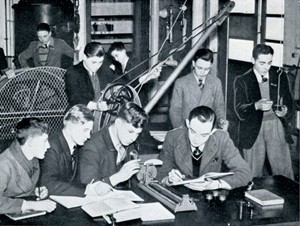
Image 3 - information
How many children went to state grammar schools in the 1950s?
Nationally around 20% of pupils gained places at grammar schools. This was an average. The number could be as high as 65% and as low as 10% depending on local provision.
Throughout the 1950s there was increased pressure from parents for more grammar school places.
Technical schools
Some local education authorities also offered technical schools. Like grammar schools, the technical schools were selective.
At technical schools the curriculum had a bias towards technical and vocational subjects rather than purely academic.
There were very few technical school places available in the 1950s. Sometimes technical and grammar schools were combined.
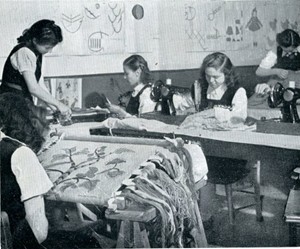
Image 4 - information
Secondary modern schools
If you failed the eleven-plus, you went to a secondary modern school that was around 80% of all children at state schools.
The emphasis was on basic education and preparation for work. That did not include GCEs. When GCE started in 1951, candidates had to be 16 or over. Since secondary modern education finished at 15 most pupils were excluded.
There was an increasing demand for some secondary modern pupils to sit GCEs. Some did manage to stay on until 16 and take their O-levels. Others transferred to grammars if it was clear that they should have been selected in the first place.
These were the exceptions. Most pupils left soon after their fifteenth birthday with no qualifications. Many got a 'dead end' factory job. In the 1950s the pay was good, but prospects were poor.
Multi-lateral schools
Some local authorities offered a different kind of school. The multi-lateral school was not a comprehensive school. Pupils still took the eleven-plus.
On entry they were allocated a place in a grammar or secondary modern stream at the same school. Pupils at multi-lateral schools followed the same path as those at separate grammar and secondary modern schools. They were two schools under the same roof.
In some multi-lateral schools, pupils in the grammar stream wore uniform, but those in the secondary modern streams did not. There was obvious difference between the two groups. In practice they tended to socialise within the grammar or secondary modern streams and not mix.
Comprehensive schools
Comprehensive schools were non-selective. They took all pupils from a given catchment area. They offered all types of courses from the grammar and secondary modern under the same roof.
In 1950 there were just ten comprehensive schools in Britain, by 1960 there were one hundred and thirty. Even in 1960 comprehensive schools were less than 5% of the total school population. [3]
Some of the UK's first comprehensive schools opened in London in the late 1940s. They were not fully comprehensive because grammar school alternatives were still available.
- Peckham Secondary School for Girls
- North Hammersmith Secondary School for Girls
- North Hammersmith Secondary School for Boys
- Battersea Secondary School for Boys and Girls
They were huge schools accommodating more than one thousand pupils. [4]
The first education authority to have a fully comprehensive system was Anglesey and the Isle of Man, which ended selection in November 1952. [5]
When did the school day start and end?
The school day was usually 9am to 4pm. Lunch breaks were normally an hour and a half.
What was the timetable like?
Primary school
A 1950s primary school timetable might have included subjects such as:
- Arithmetic
- Times tables
- English
- Spelling
- History
- Geography
- Art
- Needlework, for girls only
- Music
- Singing
- Physical training (PT)
Secondary modern schools
In secondary modern schools the emphasis was on the basics of maths and English. History and geography were often combined as one subject called 'social studies'.
Languages were usually only taught to the top streams in a secondary modern.
There was also a strong emphasis on preparation for work. Practical subjects, such as woodwork, metal work and technical drawing, were an important part of the curriculum for boys. For girls the emphasis was on cookery (domestic science) and sewing. Girls approaching leaving age also studied typewriting and office practice.
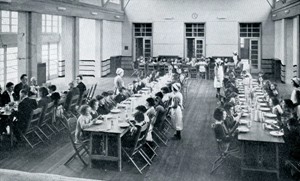
Image 5 - information
School dinners
The 1944 Education Act made it compulsory for state schools to give pupils meals. The meal had to give each child one third of their daily nutritional intake. So had to be of a high standard but may not have been to the pupils' taste.
Although the meals were served at lunchtime, they were usually known as school dinners.
The schools provided the meals free of charge to children of the unemployed and those on low incomes. Others had to pay fixed amount for each meal. In 1951 the charge for each school dinner was 7 pence. This charge rose to 1 shilling (5p) in 1957.
School uniform
Uniform was compulsory as most state grammar schools. It was also common, but not universal, in secondary modern.
The uniform comprised:
- Boys: blazer, long or short trousers depending on age, cap, tie.
- Girls: gymslip or skirt, blouse, tie, sometimes blazers as well, hat or beret.
Eston Grammar School, Teesville, Middlesbrough, North Yorkshire, was a new school opened in 1955. The school was co-ed, for boys and girls. Nevertheless, the uniform was traditional. From a contemporary advert this is the uniform worn at Eston Grammar School in the 1950s.
Girls' uniform
- Grey blazer
- Grey tunic or skirt
- School dress (probably for summer wear)
- Cream coloured blouse
- Grey cardigan
- White nylon or grey terylene socks
- School tie
- School scarf
- Kangol beret with badge
- Red sandals and 'house' shoes
- Black pleated raincoats by Dannimac
- For sport: Aertex blouse, grey shorts, grey knickers
Boys' uniform
- Black jacket (in wool, nylon reinforced)
- Shorts or long trousers in terylene, worsted or flannel
- White or grey shirt
- School tie
- Pullover in school colours
- Stocking in school colours
- School tie
- School scarf
- Cap with school badge
- Navy raincoat (for seniors)
- For sport: PE shorts and vest
Advert by Reed's in 'Beacon: The Magazine of Eston Grammar School' 1957, page 33
Punishments
Corporal punishment was common in schools in the 1950s. Detention and lines were the other common punishments.
Examinations
The Eleven-plus
The exam that was most important for children in the 1950s was the eleven-plus. The results of that exam decided whether a child went to a grammar school, a technical school or a secondary modern school.
The type of examination varied from area to area. It could include questions about English, arithmetic or general questions designed to test intelligence. How successfully it differentiated pupils was a matter for debate. Although the eleven-plus had a huge impact on a child's future, the results could be arbitrary for borderline candidates. There was often little to choose between the top stream of a secondary modern and the bottom stream of a grammar. As the 1950s progressed more children from secondary moderns passed GCEs; an examination that was thought at the beginning of the 1950s to be beyond them.
School Certificate
In 1950 children still took the old School Certificate and Higher School Certificate examinations.
Pupils entering for School Certificate were awarded a pass, a credit or a distinction. They needed to pass five subjects or more to get the certificate.
General Certificate of Education (GCE)
The GCE replaced the school certificate in 1951. There were two levels Ordinary level (O-level) and Advanced level (A-level).
Unlike the School Certificate, it was possible to take GCE O-level in single subjects.
GCE required pupils to be aged 16 or over. This meant leavers at 15 would not be able to take the examination.
The GCE raised the level of attainment needed over the School Certificate. A GCE O-level pass was equivalent to a credit at school certificate. [6]
GCE O-levels were just awarded as a pass a or a fail. The pass mark was usually 45%. Fails were not recorded on the certificate.
Films about schools in the 1950s
- The Happiest Days of Your Life (1950)
- The Belles of St. Trinian's (1954)
- Blue Murder at St Trinian's (1957)
Read more
References
[1] 'Ministry of Education Pamphlet No. 15: Seven to Eleven', published by His Majesty's Stationary Office in 1949, page 8
[2] 'School Songs and Gymslips' by Marilyn Yurdan, published in 2012 by the History Press, page 15
[3] 'The Evolution of the Comprehensive School 1926-1972', Second Edition, by David Rubinstein and Brian Simon, published by Routledge and Kegan Paul in 1973, page 109
[4] 'Experimental schools start LCC merger' published in the Observer, 7 July 1946 page 7
[5] 'The Evolution of the Comprehensive School 1926-1972', Second Edition, by David Rubinstein and Brian Simon, published by Routledge and Kegan Paul in 1973, page 48
[6] 'The Evolution of the Comprehensive School 1926-1972', Second Edition, by David Rubinstein and Brian Simon, published by Routledge and Kegan Paul in 1973, page 55
Image information
[Image 1] Published as part of the Ministry of Education Pamphlet No. 15 'Seven to Eleven' in 1949 under Crown Copyright. Duration of copyright fifty years after publication. So, this image is public domain.
[Images 2-5] Published as part of the Ministry of Education Pamphlet No. 9 'The New Secondary Education' in 1947 under Crown Copyright. Duration of copyright fifty years after publication. So, this image is public domain.
By Steven Braggs, April 2022


Comments
give more info pls.